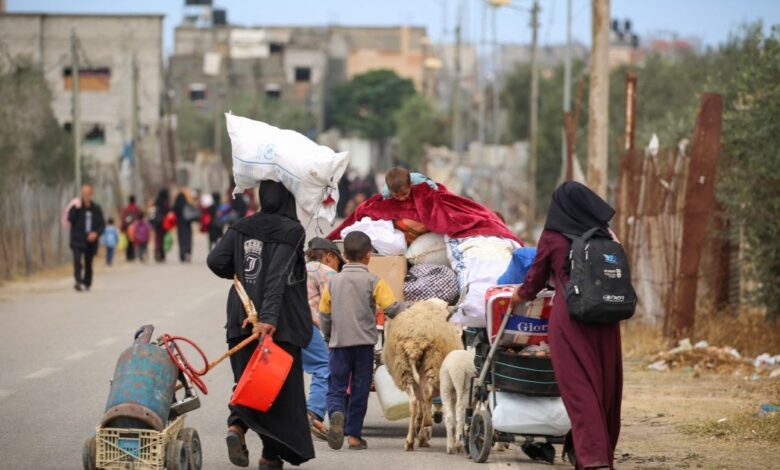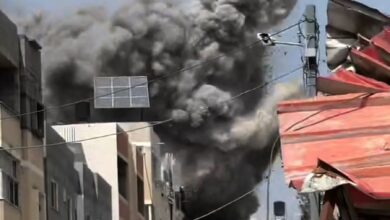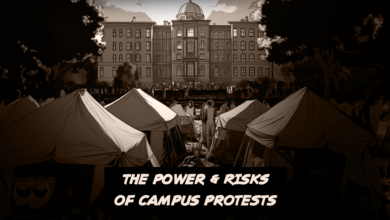Why is Israel forcing the evacuation of part of Rafah, Gaza’s last refuge?

Israel says it will launch a partial offensive on eastern Rafah, an operation that risks exacerbating the humanitarian catastrophe brought on by Israel’s devastating war on the Gaza Strip.
It has threatened to invade the city in southern Gaza for weeks, irrespective of whether a ceasefire and captive exchange deal is agreed with Hamas, arguing that its security depends on defeating Hamas in Rafah and near the Philadelphi Corridor between Gaza and Egypt.
Israel has made similar assertions at different points in its seven-month assault on Gaza, which has killed nearly 35,000 people and injured more than 70,000.
But its allies have signalled that they would not support an operation that disproportionately hurts the civilian population, but Israel is moving ahead.
Here’s all you need to know about what is happening in Rafah:

Where is Rafah and how many people live there?
Rafah is Gaza’s southernmost city and governorate, bordering Egypt.
The United Nations Relief and Works Agency for Palestine Refugees (UNWRA) estimated there are 1.4 million people sheltering there, half of them children.
Before the war, Rafah had a population of about 275,000.
How many people are being evacuated?
An Israeli army spokesperson said it is evacuating about 100,000 people from eastern Rafah.
“Although one area has received an evacuation order, it has caused a ripple effect across Rafah as people in fear now look to find safety where there is none,” UNWRA spokesperson Lousie Wateridge told Al Jazeera.
How big is eastern Rafah?
It has an area of about 30sq km (11.6sq miles).
Why does Israel plan to invade eastern Rafah?
Israel says it will attack after Hamas fired rockets from eastern Rafah on Tuesday, killing four Israeli soldiers.
An attack would cut off the Karem Abu Salam (Kerem Shalom in Hebrew) border crossing with Israel in southeastern Gaza, which aid groups say is an indispensable lifeline for starving civilians.
Israel is unlikely to have political or military backing from the United States for an “all-out ground invasion”, Mairav Zonszein, a senior analyst with the International Crisis Group, said.
She added that Israel might be trying this limited operation to exert more pressure on Hamas in the talks.

However, after Hamas effectively accepted the most recent ceasefire proposal despite not giving Israel a formal answer, “Israel is creating the appearance of a Hamas rejection, which actually hasn’t happened,” Zonszein told Al Jazeera.
“I think Netanyahu is sensing that this deal could go through, so he’s looking to avert it.”
Where have Palestinians been told to go?
Israeli forces have told Palestinians to flee to al-Mawasi, claiming that the displacement will be “temporary”.
Airdropped leaflets state: “To all residents and those currently sheltering in the Rafah Camp, the Brazil Camp and the neighbourhoods of Al-Shabura and Al-Zohour. Remaining in these areas puts your lives in danger.”
Ibrahim Nabil, a Palestinian volunteering at a hospital in Rafah, said the Israeli army told all residents that the western corridor of Gaza is the only “safe” area.
He added that Palestinians may also be able to flee to nearby districts such as Nuseirat, Deir el-Balah, Maghazi and az-Zawayda.
What is al-Mawasi?
Al-Mawasi is on the western coast of the Gaza Strip, running the length of Rafah and Khan Younis. According to aid agencies, it lacks the infrastructure needed for an influx of people and is not any safer than other areas.
The IDF has expanded the humanitarian area in Al-Mawasi to accommodate the increased levels of aid flowing into Gaza. This expanded humanitarian area includes field hospitals, tents and increased amounts of food, water, medication and additional supplies.
In accordance with the… pic.twitter.com/si47k9FCCz
— Israel Defense Forces (@IDF) May 6, 2024
“Al Mawasi has been designated a so-called ‘safe humanitarian zone’ but it is not safe,” Islamic Relief said in a statement.
“Civilians sheltering there say they continue to face attacks and severe shortages of food, water and other vital aid. Forcing more people there will make the humanitarian crisis even worse.”
According to Wateridge, aid agencies in Rafah were already struggling to provide basic needs, a feat infinitely more difficult anywhere else in Gaza.
“In Mawasi, there is a severe lack of sufficient infrastructure, including water, … and it is not feasible to support tens of thousands of displaced people there,” she said.
How were people told to evacuate?
Besides leaflets, the Israeli army has been calling displaced Palestinians.
Sarah Aljamal said her mother received a call from the Israeli army on Monday morning, urging the family to evacuate to al-Mawasi.
“I’m crying,” she said, explaining that her family is at a loss of what to do, having been displaced multiple times throughout the war.
Khader Al Belbesy received an airdropped leaflet in Arabic detailing “the expansion of the humanitarian zone in Gaza”.
“My mind is confused, and I am looking for a place. There is no transportation. I will leave without luggage,” the father of three told Al Jazeera.
The Israeli army also said on X it is sending its evacuation announcement through SMS messages and media broadcasts in Arabic.
How has the Israeli army been preparing for the offensive?
About 40,000 large tents, each accommodating 12 people, were built in the Khan Younis area ostensibly for people evacuating from Rafah, according to Omar Ashour, professor of security and military studies at the Doha Institute for Graduate Studies.
Israel also withdrew the Nahal Brigade from the Netzarim Corridor – which cuts across Gaza, dividing it into northern and southern sections – and is redeploying about six brigades (with about 3,000 to 5,000 soldiers each) to a base near Rafah, Ashour told Al Jazeera.
“This is not a limited operation but a two-division, multidomain, combined-arms offensive on Rafah,” he said.
The operation will be conducted with artillery, air and naval support plus electromagnetic and intelligence operations and will likely last months, he added.
The slider below shows recent Israeli military equipment amassment north of the Amitai military base near the Karem Abu Salem crossing.

What is international opinion on a Rafah offensive?
UN Secretary-General Antonio Guterres said a ground assault on Rafah would “put the final nail in the coffin”.
The UN Office for the Coordination of Humanitarian Affairs has warned of more suffering and death.
US President Joe Biden and other US officials have repeatedly warned against a Rafah offensive unless adequate provisions are made to evacuate civilians.
Twenty-six EU foreign ministers said it would “worsen an already catastrophic humanitarian situation”.
What could be the consequences of such an offensive?
According to Wateridge, humanitarian aid, already insufficient, would be severely impacted.
“The crossing points of Rafah and [Karem Abu Salem] are the main entry points for the humanitarian supplies and commercial goods in Gaza,” she said.
Hunger is “going to get a lot worse if the supply routes are interrupted as they will be with any military operations”.
Islamic Relief warned that “people will inevitably die as a result of the evacuation”.
“The sick and wounded, elderly people, newborn infants and people with disabilities are particularly vulnerable and often cannot evacuate without support.”



